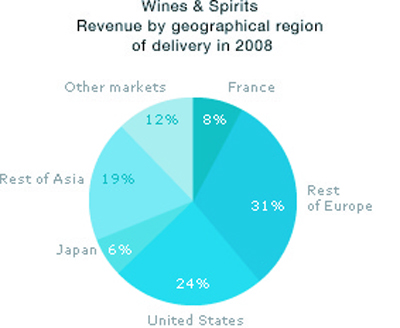In fiscal 2008, the Buhler Technology Group increased its sales (turnover) by about seven percent to CHF 1893 million (ca. EUR 1246.2 million), and with an EBIT margin of 8.4 percent achieved an excellent operating result. Due to the negative financial result, the Group’s overall result declined by 22 percent from a year ago, to CHF 101 million (ca. EUR 66.49 million). Order bookings increased by approximately three percent to CHF 1891 million (ca. EUR 1244.84 million). The backlog of orders as of the end of 2008, which rose by nine percent to CHF 948 million (ca. EUR 624.07 million), and the existing portfolio together form a strong foundation for fiscal 2009. However, in individual business units, volumes are expected to be lower than a year before.
Forget the razzmatazz of this season’s couture shows. Away from the catwalks, the couture industry has lost its swagger amid a global slump in demand for luxury goods. Several fashion labels have been forced to lay off staff, including Burberry and Chanel, it was reported. French luxury goods giant LVMH reported a slump in demand for watches and jewellery. So much for the myth that luxury goods are recession-proof.
Eberhard Gerlach, Managing Director of Künzel Maschinenbau GmbH, Mainleus, gave a review of 50 years of machinery and equipment engineering in the brewing industry at this year’s VLB Spring Symposium in Kulmbach on March 11th, 2008, against the backdrop of rapid developments in the brewing industry, both nationally and internationally.
In order to avoid any misunderstandings to start with, it should be emphasised that, in the case of food, general and fundamental statements in the context of health prophylaxis may be made only for alcohol-free products. This has to be so, otherwise one could jump to a wrong conclusion: “The more, the better”. This in particular applies to people who are ill and, in addition, would not be in conformity with general and ethical guidelines for food. As in all other cases, health-related benchmark values for alcoholic beverages apply to healthy individuals.
Radio Frequency Identification (RFID) systems are what everybody is talking about. But what is meant by this buzzword? Which technical functionalities are offered by current systems and where would it make sense to use them in the brewing and beverage industry?
The generation of heat is an essential part of the brewing process and represents an important cost factor for breweries. Soaring prices for natural gas and heating oil are the driving force behind efforts on the part of brewers to seek alternative energy sources. The renowned Weißbierbrauerei Georg Schneider (wheat beer brewery) located in Kelheim found one such alternative energy source and has implemented it.
The brewing and beverage industry is facing increased cost pressures due to rising energy prices. But there is a way to escape the cost trap: consistent energy saving. A systematic optimisation of compressed air supply can contribute significantly to this end. And there is more to it than that – availability of compressed air is simultaneously increased and its quality much better assured.
You, too, can make a substantial contribution to environmentally friendly and sustainable energy, through the use of energy cogeneration units, known as CHPs (combined heat and power units) in the food industry. Dipl.-Ing Ralf Werkmeister, Dipl.-Ing Eva-Maria Förg, PD Dr.-Ing. Winfried Russ, Institute for Resources and Energy Technology, Technical University of Munich, Center of Life and Food Sciences at Weihenstephan, all provided valuable contributions to this article, which was published in its entirety in the trade journal “Der Weihenstephaner”, No. 3, 2007, p. 95 - 98. The essential information has been summarized for Brauwelt International readers below.
Studies relating to microbial susceptibility of beer mixed beverages (BMB) have not been published heretofore. The heterogeneity of this beverage segment, arising from continuous innovations and new recipes, makes it difficult to arrive at a uniform evaluation from a microbial point of view. Within the context of a project R 398 of “Wissenschaftsförderung der Deutschen Brauwirtschaft” (“Wifö”) (Scientific Sponsors of the German Brewing Industry), 20 commercial beer mixed beverages were tested to determine susceptibility to a wide range of spoilage yeasts. The results show which spoilage yeasts can lead to which product changes (haze/sensory change/pressure build-up).
The term “drinkability” has established itself rapidly as a buzzword in the beverage industry. This term is often used as a type of quality stamp against a background of increasing competition on the market and in reflection of ongoing trends towards “quality products”. However, this neologism raises questions and it is difficult to express it in hard facts and figures [(1), (2)]. A high drinkability/enjoyment factor de facto implies that consumers enjoy a second glass just as much as the first one, while keeping to the tenet of moderate beer consumption allied to an appropriate degree of self-control.


